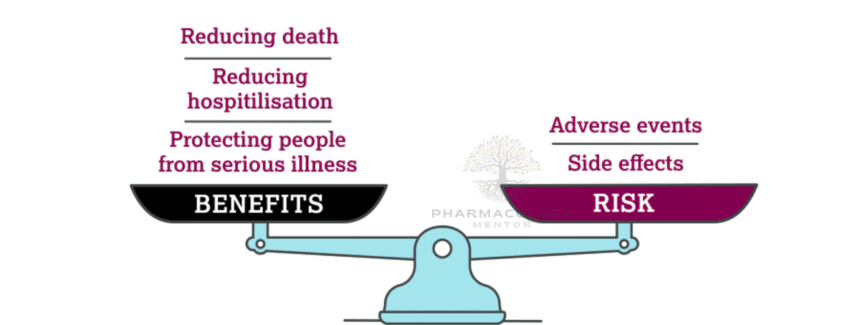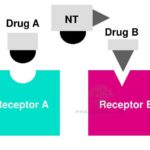The pharmacological landscape is complex, and drugs often produce a range of effects, both therapeutic and adverse. Understanding these nuances is crucial for clinicians to make informed decisions. This article explores key concepts like dose-response curves (DRCs), therapeutic index, therapeutic window, and the risk-benefit ratio, which are essential for effective and safe drug therapy.
Drug Selectivity and Dose-Response Curves (DRCs)
Drugs often have multiple effects, and their DRCs for these effects can vary. The extent of separation between the DRCs for different effects measures a drug’s selectivity. For example, isoprenaline has similar DRCs for bronchodilation and cardiac stimulation, making it less selective. In contrast, salbutamol has widely separated DRCs for these effects, making it a more selective bronchodilator.

Log dose-response curves of salbutamol for bronchodilatation (A) and cardiac stimulation (D)
Log dose-response curves of isoprenaline for bronchodilatation (B) and cardiac stimulation (C)
Therapeutic Index and Safety Margin
The therapeutic index is calculated in experimental settings as:
\text{Therapeutic Index} = \frac{\text{Median Lethal Dose (LD50)}}{\text{Median Effective Dose (ED50)}}- Median Effective Dose (ED50): The dose that produces the specified effect in 50% of individuals.
- Median Lethal Dose (LD50): The dose that kills 50% of the recipients.

However, this formula is less relevant in clinical settings, where the focus is on the “therapeutic window.” This window is defined by the dose that produces minimal therapeutic effects and the dose that produces maximal acceptable adverse effects. Due to individual variability, defining this range can be challenging.
Risk-Benefit Ratio
The risk-benefit ratio is a crucial concept that weighs the estimated harm (adverse effects, cost, inconvenience) against the expected benefits (symptom relief, cure, reduced complications). A drug should only be prescribed when the benefits outweigh the risks. However, this ratio is difficult to quantify precisely for each patient due to variables like the nature and duration of harm, as well as individual patient values. Therefore, clinicians often rely on large-scale data (pharmacoepidemiology) and personal experience.
Clinical Implications
- Individual Variability: Due to genetic and environmental factors, the effective dose for some individuals may be toxic for others.
- Efficacy vs. Tolerability: A drug may have high efficacy but may not be tolerable at doses required for maximal therapeutic effects, as seen with prednisolone in bronchial asthma.
- Pharmacoepidemiology: Clinicians often rely on large-scale data to make informed decisions, especially when the risk-benefit ratio is hard to determine for individual patients.
Conclusion
Understanding the complexities of drug effects, including selectivity, safety margins, and risk-benefit ratios, is essential for effective clinical practice. These concepts guide clinicians in choosing the most appropriate drug and dose, thereby maximizing therapeutic benefits while minimizing risks.
📚 AI Pharma Quiz Generator
🎉 Quiz Results
Medical Disclaimer
The medical information on this post is for general educational purposes only and is provided by Pharmacology Mentor. While we strive to keep content current and accurate, Pharmacology Mentor makes no representations or warranties, express or implied, regarding the completeness, accuracy, reliability, suitability, or availability of the post, the website, or any information, products, services, or related graphics for any purpose. This content is not a substitute for professional medical advice, diagnosis, or treatment; always seek the advice of your physician or other qualified health provider with any questions you may have regarding a medical condition and never disregard or delay seeking professional advice because of something you have read here. Reliance on any information provided is solely at your own risk.









